Start Licensing’s Ian Downes rounds up another busy week of Looking Out.
I know my mum doesn’t read the Licensing Lookout, so no spoiler alert needed as I report that I popped into Sainsbury’s this week and took a look at the Mother’s Day gifts.
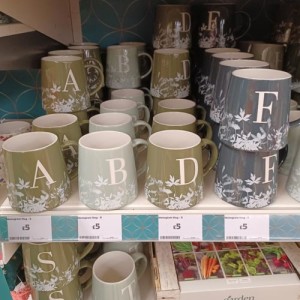 I had already bought a card so was just focused on buying a gift or two. Sainsbury’s had created a dedicated space for Mother’s Day which was well curated. Interestingly a key design theme of the offer was the use of an alphabet design. It had a collection of non licensed mugs and candles using letters of the alphabet.
I had already bought a card so was just focused on buying a gift or two. Sainsbury’s had created a dedicated space for Mother’s Day which was well curated. Interestingly a key design theme of the offer was the use of an alphabet design. It had a collection of non licensed mugs and candles using letters of the alphabet.
Personalisation in gifting definitely seems to be an ongoing trend. A few years ago Scrabble featured quite heavily in this category with the brand being a natural fit for it. Licensing wise there wasn’t much to report, but licensing did feature in Sainsbury’s book offering for Mother’s Day. It had picked a range of books that suited the occasion and created a well presented display. The licensed examples I saw were a Downton Abbey recipe book of Afternoon Tea recipes, while there was a RHS How to Garden book published by Dorling Kindersley. Seemingly there is a market for gift books featuring recognisable brand names centred on appealing subjects like gardening and cookery. Brands have a pulling power in this context and it is good to see retailers including books in their Mother’s Day offering. I am sure it is a welcome boost to publishers.
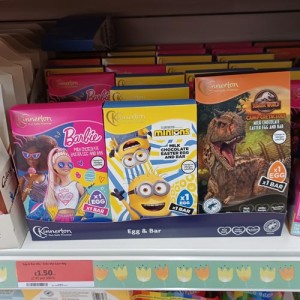 Across the aisle from Mother’s Day gifts were the Easter Eggs. Another key selling opportunity for retailers. There has been a little bit of a downturn in this category licensing wise, but Kinnerton has managed to create a licensed product offering that is still hitting home at retail. It seems to have focused on offering good value, relatively low priced entry point products. I saw three of its products in-store featuring Barbie, Minions and Jurassic World. I guess it is trying to develop a balanced portfolio and in this context established properties work well.
Across the aisle from Mother’s Day gifts were the Easter Eggs. Another key selling opportunity for retailers. There has been a little bit of a downturn in this category licensing wise, but Kinnerton has managed to create a licensed product offering that is still hitting home at retail. It seems to have focused on offering good value, relatively low priced entry point products. I saw three of its products in-store featuring Barbie, Minions and Jurassic World. I guess it is trying to develop a balanced portfolio and in this context established properties work well.
Cadbury’s continues to work with Peter Rabbit and has developed an Easter Egg Hunt theme alongside the product. The range includes an Easter Egg with plush gift set. In a category that is now dominated by big brands, Peter Rabbit has performed well and become established as a brand in the category. I think the Easter Egg Hunt element helps with brand engagement outside of store, while products like the one including a plush toy create a strong point of difference in a competitive category.
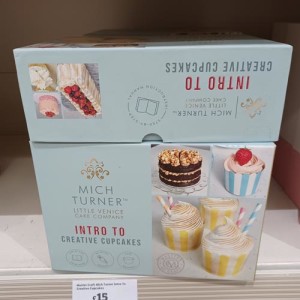 Another thing I noticed in Sainsbury’s was its commitment to crafts and crafting, demonstrated by a range of branded kits featuring personalities from the world of arts and crafts.
Another thing I noticed in Sainsbury’s was its commitment to crafts and crafting, demonstrated by a range of branded kits featuring personalities from the world of arts and crafts.
Featured personalities included watercolourist Kathryn Coyle, cake maker Mich Turner, jeweller Debbie Kershaw, macrame maker Isabella Strambio and fashion designer Patrick Grant.
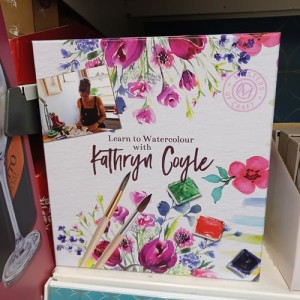 Broadly speaking the product offerings were similar – boxed kits priced around £15 that were starter kits based on projects that could be completed by using the kit. These were in a dedicated aisle with other craft products such as pens and paints, but Kathryn Coyle’s watercolour kit was placed among the Mother’s Day gifts.
Broadly speaking the product offerings were similar – boxed kits priced around £15 that were starter kits based on projects that could be completed by using the kit. These were in a dedicated aisle with other craft products such as pens and paints, but Kathryn Coyle’s watercolour kit was placed among the Mother’s Day gifts.
Certainly kits like these make great gifts, but they are also self purchase items. Crafting has seen an increase through lockdown as people used the time available to learn new skills. It is also worth noting how TV shopping channels have done a great job in developing the crafting market and also in building awareness of certain crafters as on screen personalities.
There is, of course, a plethora of make and do programmes on mainstream television as well ranging from The Great British Sewing Bee to The Great Pottery Throwdown. These have certainly helped pique consumers interest in arts and craft.
Other factors have come into play as well – for example during lockdown Aardman increased its output on YouTube developing How To arts and craft tutorials featuring the likes of Shaun the Sheep in particular. There is more ‘how to’ content available via platforms like YouTube and this has encouraged consumers to give crafting a go. Will be interesting to see how the range of kits I saw in Sainsbury’s perform.
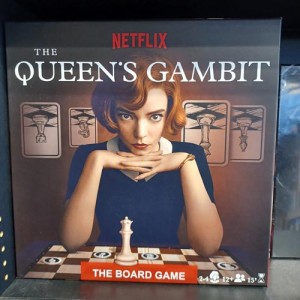 Crafting is something other retailers have picked up on as well. I noticed a range of craft kits in Waterstones, so clearly it is a category that is gaining traction beyond the specialist retailers. While in Waterstones I noticed it was stocking a Queen’s Gambit boxed board game. The product carried Netflix branding on it quite prominently, reinforcing the increasing importance of Netflix as a broadcast platform for a certain type of programming and licensing. This is not to say that potential of peak time exposure on more traditional broadcast platforms like the BBC has diminished in licensing terms. Alongside the Queen’s Gambit game was one for the hit BBC show The Wheel. It is probably an obvious thing to say, but good TV game shows make good board games.
Crafting is something other retailers have picked up on as well. I noticed a range of craft kits in Waterstones, so clearly it is a category that is gaining traction beyond the specialist retailers. While in Waterstones I noticed it was stocking a Queen’s Gambit boxed board game. The product carried Netflix branding on it quite prominently, reinforcing the increasing importance of Netflix as a broadcast platform for a certain type of programming and licensing. This is not to say that potential of peak time exposure on more traditional broadcast platforms like the BBC has diminished in licensing terms. Alongside the Queen’s Gambit game was one for the hit BBC show The Wheel. It is probably an obvious thing to say, but good TV game shows make good board games.
Finally I attended the IFE trade show this week. This show focuses on food and drink featuring producers, manufacturers and suppliers. There are plenty of opportunities to test and taste the merchandise. Don’t have breakfast if you decide to go next year!
I chaired a panel discussion on brand licensing in the food category and was grateful to be joined by David Taylor and Jonathan Bowden from Brand of Brothers, an experienced licensee in the ice cream and ice lolly categories. I think the panel discussion went well and with their help we got the message across that a well chosen licence can create a commercial opportunity for manufacturers, while giving the brand owner an opportunity to extend their brand into relevant categories with the help of category experts. A key point that Brand of Brothers made was that the licensed brand needs to be well established and in its category it should have a distinct taste and flavour profile.
There were a few noteworthy examples of licensed products at IFE that I used to emphasise this point. Licensee TSC Food Products showcased its Oreo Fresh Milk Snack products along with a Baileys Dessert product, while a UK distributor was presenting products such as Hershey’s and Reese’s frozen beverages. In all these cases the featured brands are well established and well loved with distinctive taste. Great examples of licensing and it was useful to be able to point to them in the context of our discussion.
Ian Downes runs Start Licensing, an independent brand licensing agency. His Twitter handle is @startlicensing – he would welcome your suggestions for what to look out for.































